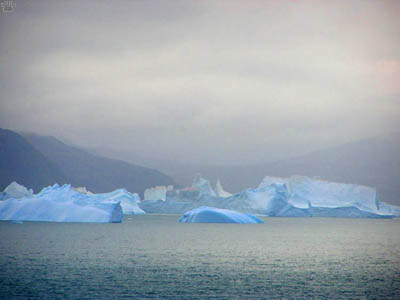
Icebergs on shallows, Cumberland East Bay, South Georgia.
Part 8. Just Ice
Although some icebergs break off the glaciers on Scotia Sea's
own islands, most of them come from Larsen and Ronne Ice Shelves further south.
I never expected these chunks of ice to be the most impressive part of my trip
there, but they were.
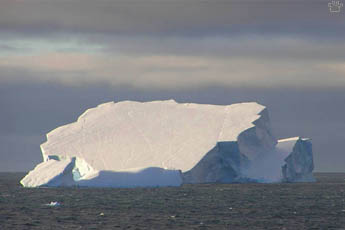 |
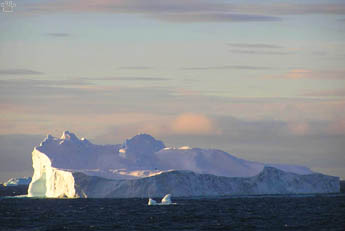 |
| Icebergs, Scotia Sea. |

Tabular iceberg, off Antarctic Peninsula. |
Flattop icebergs are called tabular. They break
off ice shelves. They are the largest, reaching 100 miles or more in size. Such
huge icebergs can cause problems for wildlife if they block access from shore
to ice-free areas of the sea. They can provide ideal landings for airplanes. |
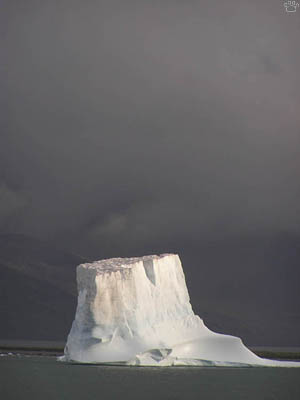
Remnants of an eroded tabular iceberg, Scotia Sea. |
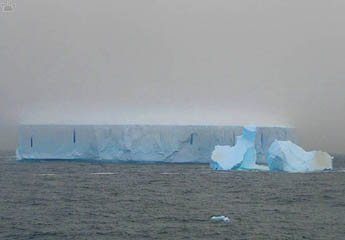
Tabular iceberg and bergy bit, off South Orkney Islands. |
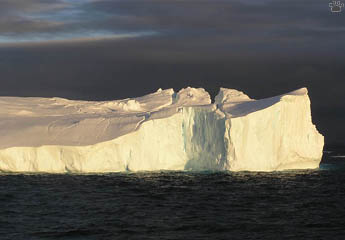
Some icebergs from ordinary glaciers approach tabulars in size and shape. Scotia Sea. |
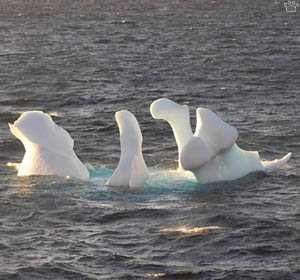
Eroded bergy bit, Bransfield Strait. |
The smallest icebergs and iceberg fragments are
called bergy bits. They are extremely hazardous for navigation, because it's very
difficult to see them on radar, at night or in poor weather. |
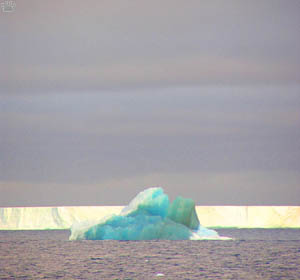
Bergy bit and tabular iceberg, Bransfield Strait. |

Bergy bits, off South Orkney Islands. |
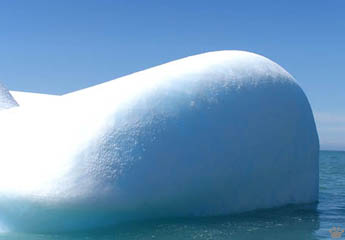
Bergy bit up close, Gold Harbor, South Georgia. |
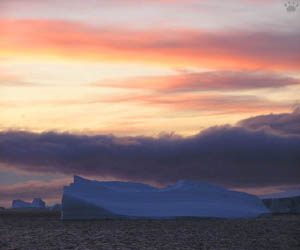
Old
icebergs, off Antarctic Peninsula. |
Blue icebergs consist of older ice, often from
slow-moving glaciers. The color gets more intense as they drift around or sit
on shallows. Green tinge is often caused by algae. |
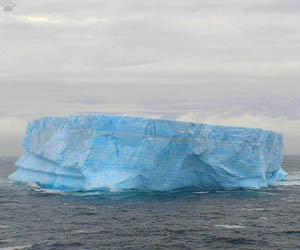
Old iceberg, off South Orkney Islands. |

Midsize iceberg eroded by waves, off South Orkney Islands. |

Tabular iceberg eroded by waves, off South Orkney Islands. |
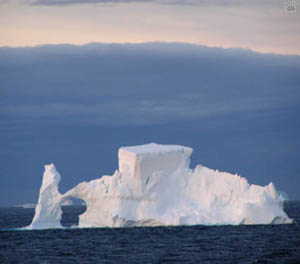
Eroded bergy bit, Bransfield Strait. |
Wave erosion sometimes cuts icebergs into weird
shapes. Occasionally, deep caves are formed. They are filled with blue light,
and are very interesting to explore. |
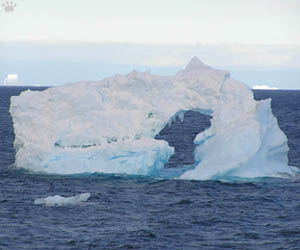
Eroded bergy bit, outside Hope Bay, Antarctic Peninsula. |
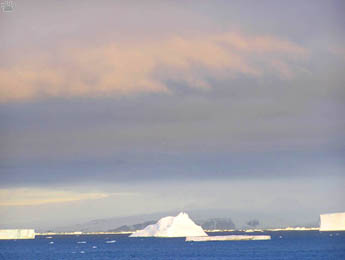 |
 |
| Icebergs, Bransfield Strait. |
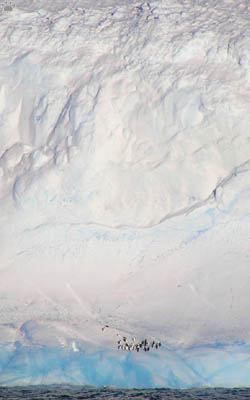
Adelie penguins (Pygoscelis adeliae) on an iceberg,
Bransfield Strait. |
Antarctic wildlife uses icebergs in many ways.
Eroded underwater surface makes perfect growing substrate for tiny algae, such
as diatoms. Algae serve as food for krill and other crustaceans, who, in turn,
attract small fish and squid. Many animals, from storm-petrels to whales, feed
around icebergs. Snow petrels (Pagodroma nivea, previous pages) are particularly
fond of them. Seabirds, especially Adelie penguins, and seals,
mostly crabeater, leopard (Hydrurga leptonyx) and Ross' (Ommatophoca
rossi), rest and molt on them. Icebergs are more important for wildlife in
summer, when some areas have no ice floes. |
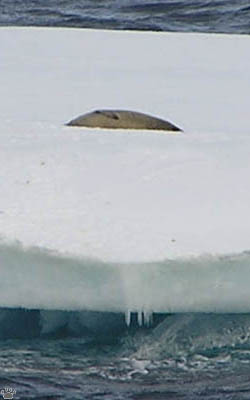
Crabeater seal (Lobodon carcinophagus)
sleeping on
an iceberg, Bransfield Strait. |
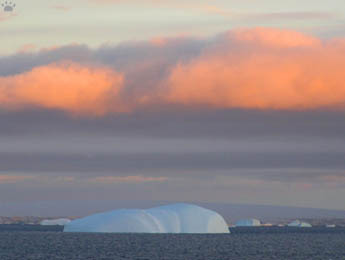
Icebergs in Bransfield Strait. |
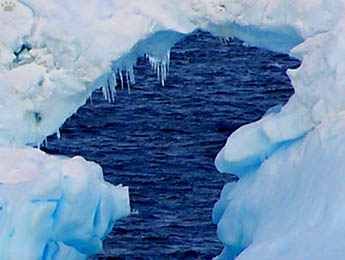
Eroded bergy bit, outside Hope Bay. |
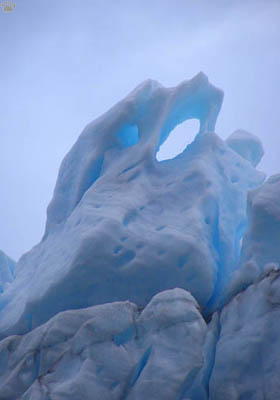
Eroded iceberg, off Petrel Rocks, Scotia Sea. |
Bransfield Strait between the Antarctic Peninsula
and the South Shetland Islands, also known as the Iceberg Alley, is one of the
best places to see icebergs as they slowly drift from Bellingshausen Sea to Scotia
Sea. When you get there, you begin to realize what a fascinating and beautiful
continent lays ahead. Unfortunately, that's precisely the moment when most cruise
ships turn back. |

Icebergs in Bransfield Strait. |
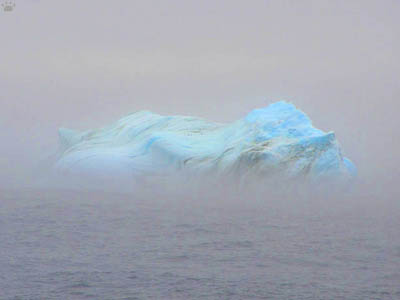
Bergy bit, Scotia Sea. |
Back to Part 7
Home
|